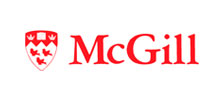Killam Seminar Series: Applications of STAGE and MICRO Imaging in Neurodegenerative Disease
To attend in person, register .
To watch virtually, click .
E. Mark Haacke
Professor, Radiology and Neurology, Wayne State University, USA
Host: Amir Shmuel
Abstract:听STAGE is a rapid multi-contrast imaging technique that can provide not only standard T1 and T2 like contrasts but also proton spin density weighted images, T2* weighted images, SWI, R2* maps, QSM maps, water content maps, circle of Willis MRA, auto segmentation of white matter, gray matter and cerebrospinal fluid and simulated fluid-attenuated inversion recovery (FLAIR) in 3 to 6 minutes. Coupled with a new denoising algorithm called CROWN, STAGE can be used to create a new series of homogeneous images that have been corrected for both radiofrequency transmit and receive inhomogeneities.
During the last few years, we have focused on measuring iron content and neuromelanin (NM) in the substantia nigra (SN) for comparing idiopathic Parkinson鈥檚 disease (PD) with healthy controls and patients with other movement disorders. We have found that the volume of NM, the iron content of the SN, volume of the SN and the N1 sign all together can provide an area under the curve (AUC) of 95% in distinguishing PD from healthy controls. We have developed a template of the midbrain to allow for automatic detection and quantification of these properties. During the process, we used true susceptibility weighted imaging (tSWI) to enhance the N1 sign visibility. Our data has been acquired using STAGE which is a rapid, quantitative, multi-contrast data collection and processing that is vendor agnostic. As such we have created a protocol that can be used for PD studies globally.
We have also developed a new method to image all the vessels in the brain down to 100 microns in size. This method we refer to as microvascular in-vivo contrast revealed origins (MICRO) imaging. It uses an iron based contrast agent Ferumoxytol to instill susceptibility inside all vessels. This then leads to a major signal loss revealing small vessels far better than a conventional T1 reducing contrast agent can. We apply this method to Parkinson鈥檚 disease and to multiple sclerosis to reveal new vascular findings for both diseases.
Bio:听Prof. Haacke has been in the field of MRI since 1983.
- Pioneered the development of technologies such as super-resolution image reconstruction, fast imaging, MR angiography, Susceptibility Weighted Imaging (SWI), Quantitative Susceptibility Mapping (QSM) and more recently STrategically Acquired Gradient Echo (STAGE) and Constrained Reconstruction and Reduction of White Noise (CROWN) imaging.
- Past President of the ISMRM, SMRI and ISNVD.
- Recipient of Gold and Silver Medals of the ISMRM and the Gold Medal of the ISNVD.
- Trained and mentored more than 150 students, post-docs, fellows and junior faculty.
- Published more than 400 papers, with 45,000+ citations and an h-factor of 99.
Supported by the generosity of the Killam Trusts, the MNI's Killam Seminar Series invites outstanding guest speakers whose research is of interest to the scientific community at the MNI and 平特五不中.




